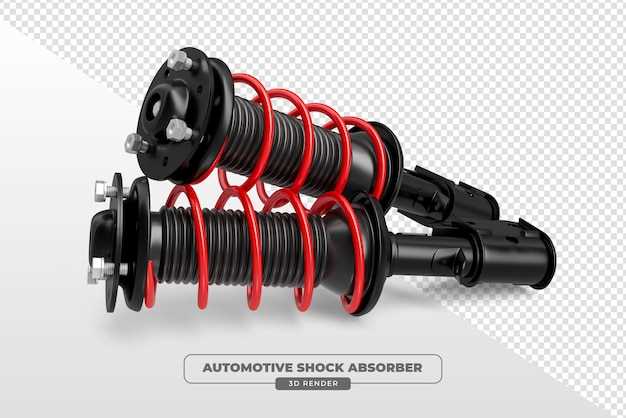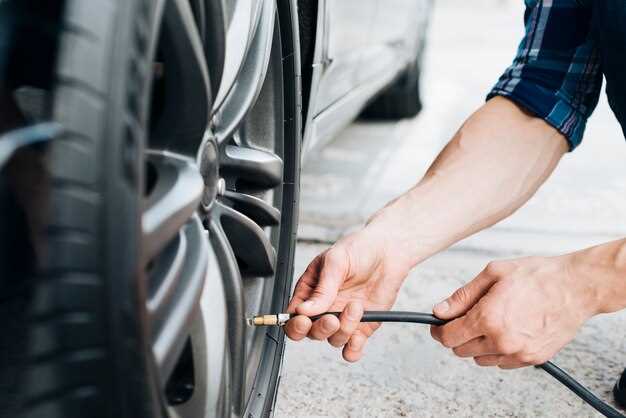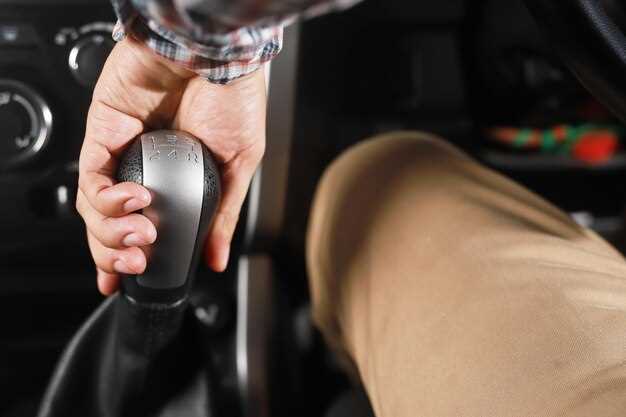
Upgrading to a sport suspension can significantly enhance the driving experience of your Audi. This modification not only improves handling and stability but also gives your vehicle a more aggressive stance. A sport suspension system generally includes lowered springs and upgraded shock absorbers, designed to provide better grip and responsiveness on the road or track.
This guide will walk you through the process of installing a sport suspension on your Audi, ensuring you have the right tools and knowledge to execute the task effectively. Understanding the nuances of suspension systems is crucial, as these components directly impact your vehicle’s performance and comfort.
Before diving into the installation process, it is vital to gather all necessary tools and parts. Be prepared to invest time and effort into this project, as a well-installed sport suspension can transform your Audi’s performance and driving dynamics. Let’s delve into the step-by-step process of upgrading your Audi’s suspension to a sportier setup.
Install Sport Suspension on Your Audi: Step by Step Guide
Installing sport suspension on your Audi can significantly enhance its handling characteristics and overall driving experience. Follow this detailed guide to successfully complete the installation process.
Tools and Materials Needed
- Sport suspension kit (shocks and springs)
- Jack and jack stands
- Wrench set
- Screwdriver set
- Torque wrench
- Spring compressor
- Clean rags
- Anti-seize compound
Preparation
- Ensure your Audi is parked on a flat, stable surface.
- Gather all necessary tools and materials.
- Disconnect the battery to prevent any electrical issues during installation.
Removing the Old Suspension
- Use the jack to lift the front or rear of the vehicle, then position jack stands securely.
- Remove the wheels to gain access to the suspension components.
- Detach the sway bar links, if applicable.
- Loosen and remove the bolts securing the stock struts or dampers to the vehicle.
- Carefully use a spring compressor to compress the springs, then remove them from the strut assembly.
Installing the Sport Suspension

- Install the new sport springs onto the strut assembly, ensuring proper alignment.
- Use the spring compressor to secure the springs in place, then reattach the struts to the vehicle.
- Torque the bolts to the manufacturer’s specifications for safety and performance.
- Reattach the sway bar links if they were removed.
- Repeat the process for the other side of the vehicle.
Final Steps

- Reinstall the wheels and lower the vehicle back to the ground.
- Reconnect the battery and ensure all connections are secure.
- Perform a visual inspection of the suspension components for proper installation.
- Test drive your Audi to experience the improved handling that the sport suspension offers.
Following this step-by-step guide will allow you to confidently install sport suspension on your Audi, enhancing its handling performance and making your driving experience more exhilarating.
Choosing the Right Sport Suspension Kit for Your Audi
When selecting a sport suspension kit for your Audi, it is essential to consider several factors that influence handling and performance. Start by identifying your driving style and preferences. If you prioritize sharp cornering and enhanced steering feedback, opt for a kit that offers lower ride height and stiffer springs.
Next, evaluate the type of driving you will be doing most often. For daily driving, a balance between comfort and sportiness is crucial. Look for adjustable kits that allow you to fine-tune stiffness and ride height according to your needs. On the other hand, if you participate in track days or motorsport events, a more aggressive setup may be appropriate.
Spring rates are another critical aspect. Higher spring rates provide better handling but may sacrifice comfort. Consider how much daily driving you do versus spirited driving. Consult with suspension specialists or online forums specific to Audi owners to gain insights on optimal spring rates that suit your model.
Additionally, the choice between coilovers and lowering springs can impact your final decision. Coilovers give you the flexibility to adjust height and damping, making them a versatile option for various conditions. If simplicity and cost are priorities, high-quality lowering springs may suffice, offering improved handling with less complexity.
Lastly, ensure compatibility with your specific Audi model and year. Using a well-reviewed kit designed for your car’s platform guarantees that installation is straightforward and performance is as expected. Investing in the right sport suspension kit will significantly enhance your Audi’s handling and overall driving experience.
Step-by-Step Installation Process for Audi Sport Suspension
Installing sport suspension on your Audi can significantly enhance handling and overall driving performance. Follow this detailed guide to achieve a seamless installation process.
Tools and Materials Needed:
- Jack and jack stands
- Socket wrench set
- Screwdrivers
- Spring compressors
- New sport suspension kit
- Torque wrench
Step 1: Prepare the Vehicle
Park your Audi on a flat surface and engage the parking brake. Loosen the lug nuts on the wheels slightly without removing them. Lift the vehicle with the jack and secure it on jack stands, ensuring safety during the process.
Step 2: Remove the Wheels
Fully detach the wheel lug nuts and remove the wheels to expose the suspension components. This is crucial for accessing the struts and springs effectively.
Step 3: Detach the Stock Suspension
Using the socket wrench, unbolt the strut assembly from its mounting points. Carefully disconnect any brake lines or sensors attached to the strut. Employ spring compressors on the stock springs to safely unload tension before removal.
Step 4: Install the New Sport Struts
Attach the lower part of the new sport struts to the control arms and secure them with bolts. Ensure they are tight and are positioned correctly to maintain proper alignment for handling.
Step 5: Attach New Springs
With the spring compressors still in place, mount the sport springs onto the new struts. Once positioned, gradually release the spring compressors to secure the springs in place. Make sure they are seated correctly in the strut perches.
Step 6: Reassemble and Secure
Reattach and tighten all necessary bolts for the strut assembly, ensuring to follow the manufacturer’s torque specifications. Reconnect any brake lines or sensors that were detached during the installation process.
Step 7: Reinstall Wheels
Put the wheels back on and hand-tighten the lug nuts. Lower the vehicle back to the ground using the jack, then fully tighten the lug nuts in a crisscross pattern to ensure even tightening.
Step 8: Test Drive
After the installation, take your Audi for a test drive. Pay close attention to the handling and ride quality. Make adjustments if necessary to achieve the desired performance from your new sport suspension.
Following these steps will help you successfully install sport suspension on your Audi, elevating your driving experience with improved handling and performance.
Tuning and Testing Your Audi’s Handling After Suspension Upgrade
After installing the sport suspension on your Audi, the next crucial phase involves tuning and testing the vehicle’s handling. Achieving optimal performance requires careful adjustments to ensure that the new suspension system complements your driving style and environment.
Tuning Your Suspension
Start by adjusting the damper settings if your sport suspension features adjustable components. This involves setting the rebound and compression rates to enhance stability and responsiveness. A firmer setting typically improves handling during cornering, while a softer setting can enhance comfort on bumpy roads.
Next, consider adjusting the ride height. Lowering the suspension can lower the center of gravity, leading to better handling. However, ensure that the new height does not negatively impact the vehicle’s alignment or clearance. Use corner balancing to distribute weight evenly across all four wheels, promoting better stability during turns.
Testing the Handling
Once tuning adjustments are made, it’s vital to test the handling of your Audi. Begin with a controlled environment, such as an empty parking lot or an autocross course. Pay attention to how the car responds to steering inputs. The goal is to achieve a balanced feel without excessive understeer or oversteer.
Gradually push the vehicle through a series of turns at varying speeds. Note any tendencies of the car during cornering – does it feel planted, or does it drift? Adjust tire pressure if necessary, as it can significantly influence handling characteristics. Experiment with different pressures to find the sweet spot that maximizes grip without compromising ride comfort.
Fine-Tuning
If you experience any issues, revisit your suspension adjustments. Adjust the sway bar links for better roll stiffness, or modify camber settings to improve tire contact during cornering. Fine-tuning these aspects can greatly enhance handling performance.
Lastly, conduct a road test to evaluate the suspension under real driving conditions. Assess the overall comfort and responsiveness of your Audi. The aim is to strike a balance between performance and everyday usability, ensuring that your customized setup meets your expectations.
